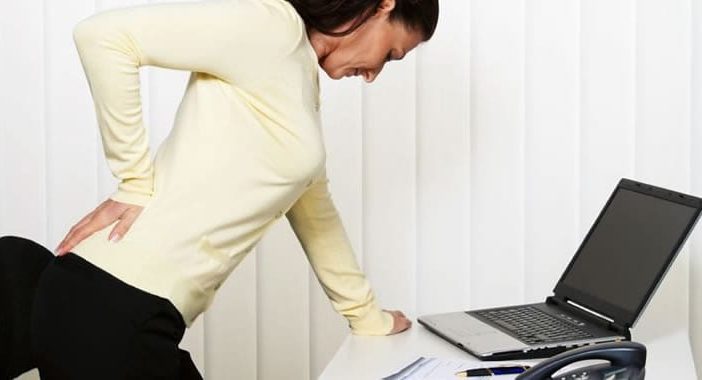
On March 25th, 2020 Governor Tim Walz signed an executive order for all Minnesotans to Stay-At-Home. As a result, the number of people in our state working from home has significantly increased, and creating a makeshift office space has become a necessary task. This is a very important time to make sure you have everything you need to transition into a healthy work environment at home.
This drastic change has resulted in two big factors that can contribute to increasing low back pain. First, an overall decrease in your physical activity. Think about how many steps you get in a day walking from your car to your office space, walking around in your office, running errands after work and attending your kids sports and activities. All of this physical activity is significantly reduced now due to the stay-at-home order.
The second factor against our favor is a new work environment which includes new chairs, desk, computer/laptops, etc. These changes are putting your body into new postures that it’s not accustomed to in comparison to your traditional workstation. This can lead to increasing the risk of aggravating your pre-existing low back pain or causing new pain.
The good news is that there are plenty of modifiable and easy fixes we can make to create a sustainable and comfortable work environment at home.
Prevent Low Back Pain With These Suggestions
1. Check Your Chair
Here are some things to look for in a work chair:
- Your knees should slightly be below your hips. When our knees sit above our hips, this can result in increased pressure at the low back contributing to pain and stiffness.
- Is there support when you sit upright? A good chair will have firm (not too firm) contact with your low back when you’re sitting upright in a “good” or “tall” posture position. If the chair’s backrest doesn’t provide this support, use towels to fill the space between your low back and the chair.
- Your feet should be touching flat on the ground. This reduces the load or stress at your low back.
- Variety is good. When applicable, sitting in different chairs will give your body a break from the position it was just in for the past 30-60 minutes. This change alone can be a lifesaver to preventing stiffness and pain at your back. Even if you just sit in a new chair for 10-15 minutes, it’s that easy.
2. Stretch Your Hamstrings & Hip Flexor Muscles
The hamstrings (muscles on the back side of your thighs) and the hip flexors (the muscles at the top and front side of your thighs) are the two most likely muscles to get tight when sitting most of the day. When you sit, these muscle groups are placed into a shortened position which can lead to increased tension at the low back when you move out of a seated position.
For example, have you ever experienced when you were diligently working and lose track of time? When realizing you’ve been sitting for the past three hours and go to stand, you experience extreme stiffness and pain at your low back. Becoming more flexible at both your hamstrings and hip flexors can help prevent this from occurring.
Hamstring stretch: Complete three rounds holding for 30 seconds once to twice a day.
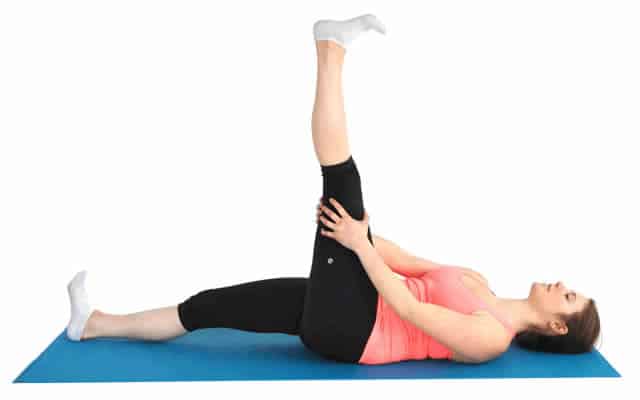
Hip Flexor stretch: Complete three rounds holding for 30 seconds once to twice a day. In the picture below, he’s demonstrating a stretch for the right hip flexor.
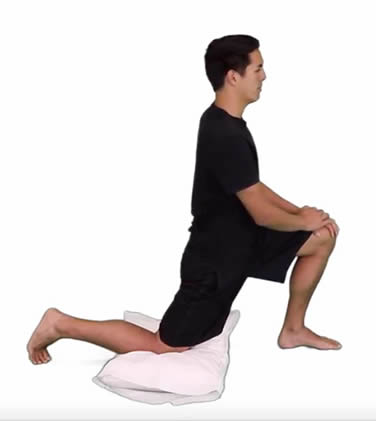
3. Complete An Ergonomic Assessment
Keep it simple! No set-up is going to be perfect or exactly match this picture. We recommend this picture to people as a “guide” to their ideal set-up, not an absolute replication. At the end of day, the perfect desk set-up for you is going to be different than mine.
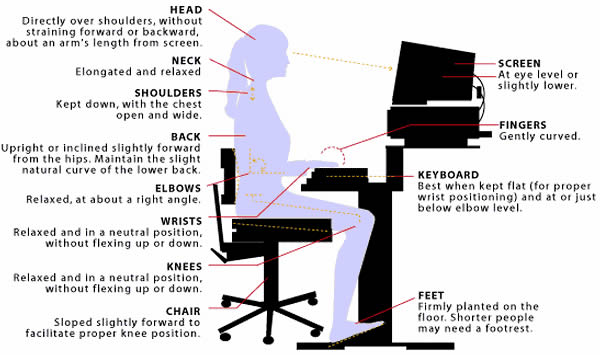
4. Go For A Walk
Keep it simple! No set-up is going to be perfect or exactly match this picture. We recommend this picture to people as a “guide” to their ideal set-up, not an absolute replication. At the end of day, the perfect desk set-up for you is going to be different than mine.
- This may sound like a very simple tip or an easy one to accomplish, but we wouldn’t be recommending it if it didn’t help. There is an astounding amount of evidence to support the benefits of a 20-minute walk on preventing and decreasing low back pain.
- Our suggestion would be to complete this walk during your work hours. This will break up your time spent sitting, and give you a break from staring at a screen.
- Another important note, this walk should be at a “brisk” pace. Just a little faster than your “normal” walking speed.
There you have it! Four quick and easy tips that you can start applying today to prevent low back pain while working from home. We recommend trying out all of these to the best of your ability. You may find that some work better than others. The key is that you have some options to control your work environment to help reduce low back pain.
If you’re still struggling with low back pain and would like to talk to one of our physical therapists directly, give us a call at 612-767-9917, or click below to get your FREE back pain guide.
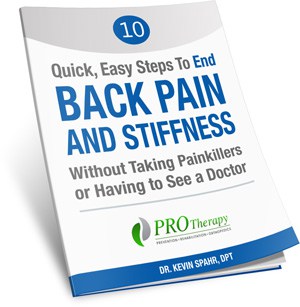
Do You Want to Be in Less Pain?
Maybe you’re left feeling Confused? Skeptical? Fearful? Anxious? Depressed? You’ve sought advice from other healthcare professionals, maybe even a Physical Therapist in the past, but nothing they seemed to say or do helped solve your problem.

